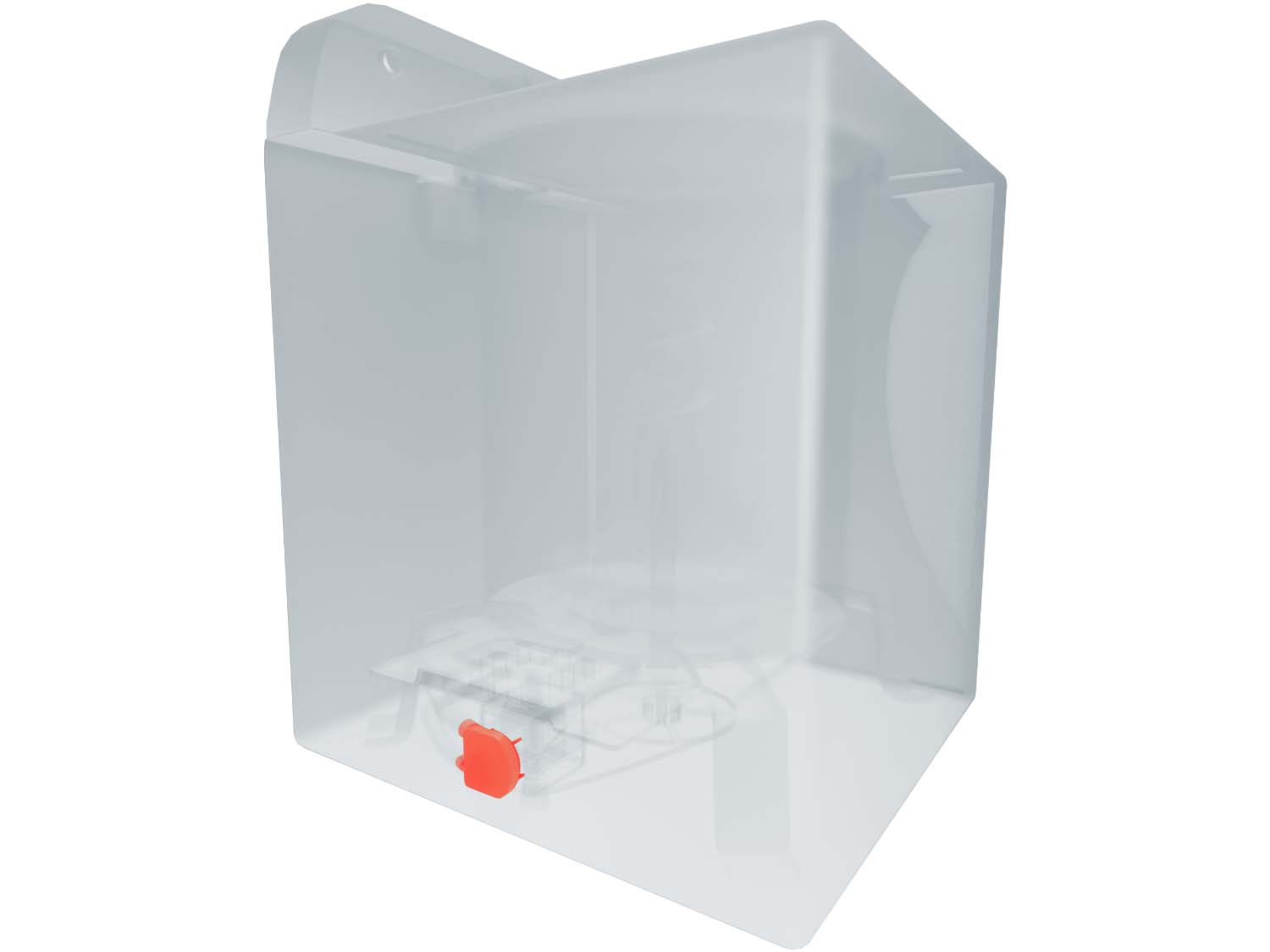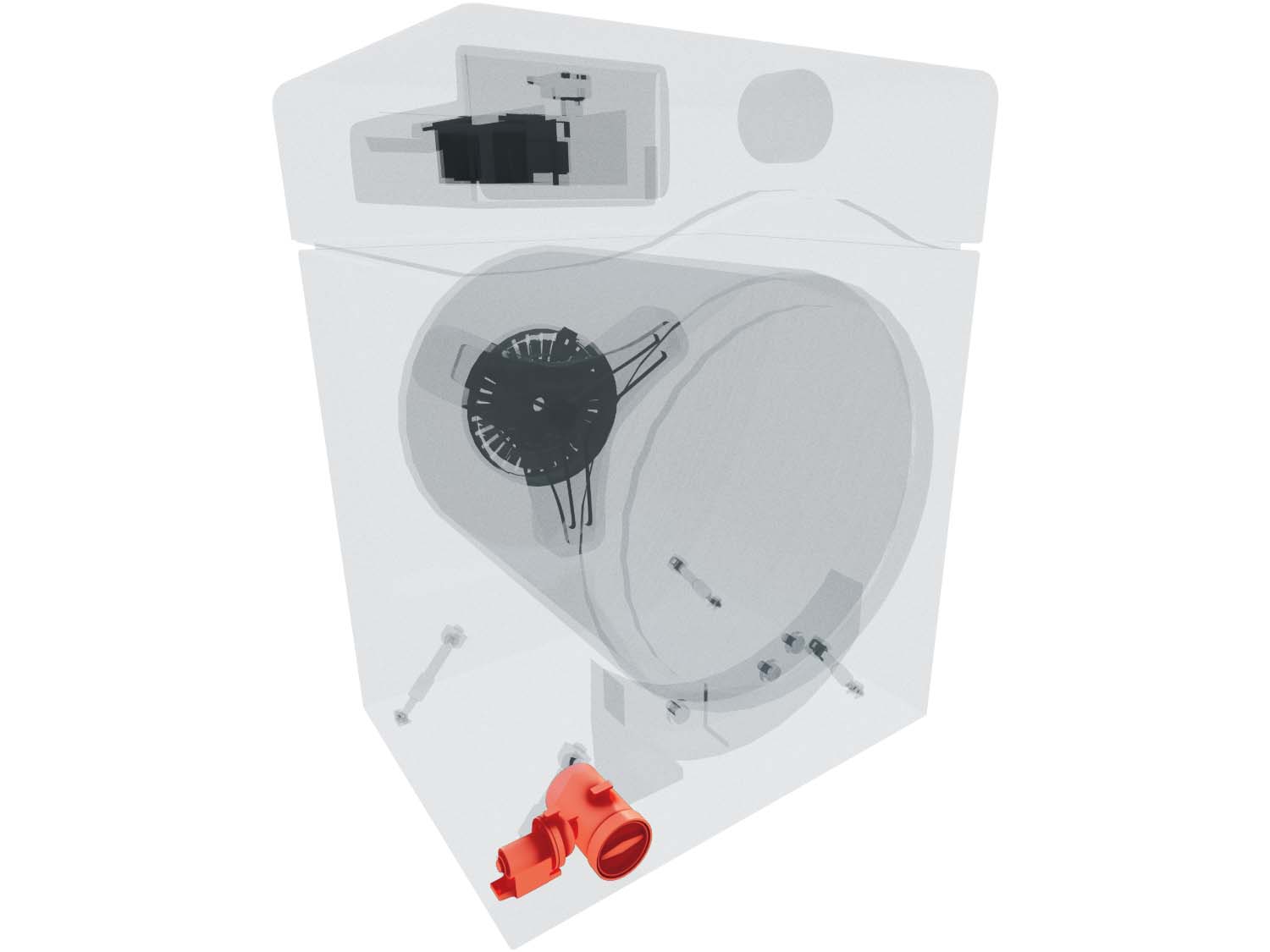- What is a Drain Pump?
- Where is the Drain Pump Located?
- How to Access, Remove, and Inspect the Drain Pump in a Top Load Washing Machine
- How to Install a New Drain Pump in a Top Load Washing Machine
- How to Access, Remove, and Inspect the Drain Pump in a Front Load Washing Machine
- How to Install a New Drain Pump in a Front Load Washing Machine
How to Fix a Drain Pump for a Washer With Draining Issues
If you have noticed that your washer is not draining and your clothes are a soggy mess, you may need to check the drain pump as a potential cause. If your washer is not draining, the pump could be clogged or damaged. The drain pump can fail mechanically by getting blocked with a small item or piece of clothing. Alternatively, the impeller on the drain pump might be broken, also causing it to fail. On washers with their own pump motor, there may be power supply issues as well. If you have noticed that your washer is not draining and your clothes are a soggy mess, you may need to check the drain pump as a potential cause. If your washer is not draining, the pump could be clogged or damaged. The drain pump can fail mechanically by getting blocked with a small item or piece of clothing. Alternatively, the impeller on the drain pump might be broken, also causing it to fail. On washers with their own pump motor, there may be power supply issues as well.
This repair guide will show you how to inspect the drain pump and test it. After reading this, you will feel confident in your ability to DIY your washer back to life! Once you have established what the cause is, you can follow the simple steps laid out here to either fix it or install a new one. We will show you how to install a replacement part and restore your washer to full working condition.
What is a Drain Pump?
The drain pump flushes wastewater out from your washing machine. This water is pumped out of the drain hose and into the drainpipe or washtub. The drain pump is activated before and during the spin cycle. On some washers, the main motor drives the pump, and the pump simply has an inlet and an outlet. In other machines, the drain pump might have a motor of its own, meaning that the pump can fail electrically.
Where is the Drain Pump Located?
You can usually find the drain pump mounted to the floor of the washer, either at the front or at the back.
General Location of the Drain Pump in a Top Load Washer

General Location of the Drain Pump in a Front Load Washer

How to Access, Remove, and Inspect the Drain Pump in a Top Load Washing Machine
- Begin by unplugging your washing machine and moving it away from the wall.
- Check and note down which hose goes to the hot connector, and which one goes to the cold connector.
- Next, loosen and remove the two hoses. It is normal for some water to pour out at this point.
- On some washers, you may need to remove the entire washer cabinet to expose the drain pump at the bottom of the washer.
- On most other washers, you can access the pump from underneath the machine.
- You will find the drain pump at the bottom of the washer, on the front of the motor. It is held in place with two small spring clips and has an inlet hose from the tub and a drain hose going out from the bottom.
- With the pump exposed, remove the tub-to-pump hose and the drain hose. Using a pair of pliers, compress the spring clamps, slide them up the hose, and work the hoses off the pump.
- Examine both the pump’s inlet and its outlet to see if there may be any items creating a blockage.
- If not, remove the two clips on either side of the pump and slide the pump off the motor shaft to examine it more thoroughly.
- Check the pump for any clogs. On top-load washers with their own pump, remove the filter screen to verify that the pump is not clogged. If there is no clog and you hear the motor running, the impeller might be damaged. If it is, the pump will need to be replaced.
- If the pump is clean and the impeller is not damaged, you will need to test the pump motor (if it has its own motor) for continuity using a multimeter.
- Open the cover that protects the wire harness plug on the drain pump and pull the wire harness plug out of the drain pump.
- Take your multimeter and touch a probe to each terminal. If the reading is not within range or there is no reading, the part has failed and will need to be replaced.

How to Install a New Drain Pump in a Top Load Washing Machine
- Check ‘How to Access, Remove, and Inspect the Drain Pump in a Top-Load Washing Machine’ for instructions on how to remove the old drain pump.
- With the cover already open and the wire harness plug out of the drain pump, you will simply need to remove the old drain pump and install the new one.
- To do this, first, remove the bolts securing the drain pump to the bottom of the washer tub and put the old pump aside.
- Grab your new drive pump and secure it to the bottom of the washer tub using the bolts.
- Plug the wire harness into the new pump and close the wire harness cover.
- Reassemble the parts in direct reverse order. Begin by reconnecting the two hoses. Fully insert the hoses into the pump nozzle and reposition the clamps back on.
- Fit the cabinet back onto the washer.
- Reinstall the clamps on the top of the washer. Pull it forward to line it up with the opening in the main top and simply press it into place.
- Fit the console back on.
- You can plug in your machine now, and the repair is complete.

How to Access, Remove, and Inspect the Drain Pump in a Front Load Washing Machine
- Begin by unplugging your washing machine and moving it away from the wall.
- Depending on your washer model, there may be several ways to access your drain pump. On some washers, you can simply remove the back panel. On others, you may need to remove the console/control panel and the front panel and move the door boot. Ascertain which one yours is.
- Once you have access to the drain pump, remove the plug from the small drain hose on the pump body to drain any water remaining and place it back on afterwards.
- Depending on your model, the pump may also have two or three hoses attached to it, and it may be secured to the base with bolts or a locking tab.
- Use pliers to release the clamps on the hoses by compressing the clamps and sliding them upwards. Now pull the hoses off the pump body.
- The pump housing may be secured using three bolts or a locking tab. Remove these bolts or press on the locking tab to slide the pump off.
- Disconnect the wire harness connections off the drain pump (make a note of where the wires connect).
- Take your multimeter and touch a probe to each terminal. If the reading is not within range or there is no reading, the part has failed and will need to be replaced.
How to Install a New Drain Pump in a Front Load Washing Machine
- Check ‘How to Access, Remove, And Inspect the Drain Pump in Front Load Washing Machine’ for instructions on how to remove the old drain pump.
- Some manufacturers sell the complete assembly motor and pump as one, while others offer them as two separate parts. You will need to verify which one yours is as you may need to replace either the whole assembly or the drain pump only.
- If the pump comes separately, remove the drain pump out of the pump body and pry off the cover on the motor, if it has one.
- Insert and secure the new drain pump into the pump body.
- Reinstall the pump body in the washer base and secure it with the mounting bolts.
- If you need to replace the whole assembly, simply pull the old one out and insert the new one.
- Reconnect the wires to the new drain pump.
- Route the wires through the tiebacks on the drain pump.
- Reconnect the hoses and secure them with the spring clamps.
- If your model required you to remove the front panel and the console and move the door boot, you can now place these back in position and reconnect the wire harness.
- Plug the washer in, and your repair is complete.
Next: Troubleshooting the Lid Switch and Door Latch
Go To Main Page: Draining Issues




